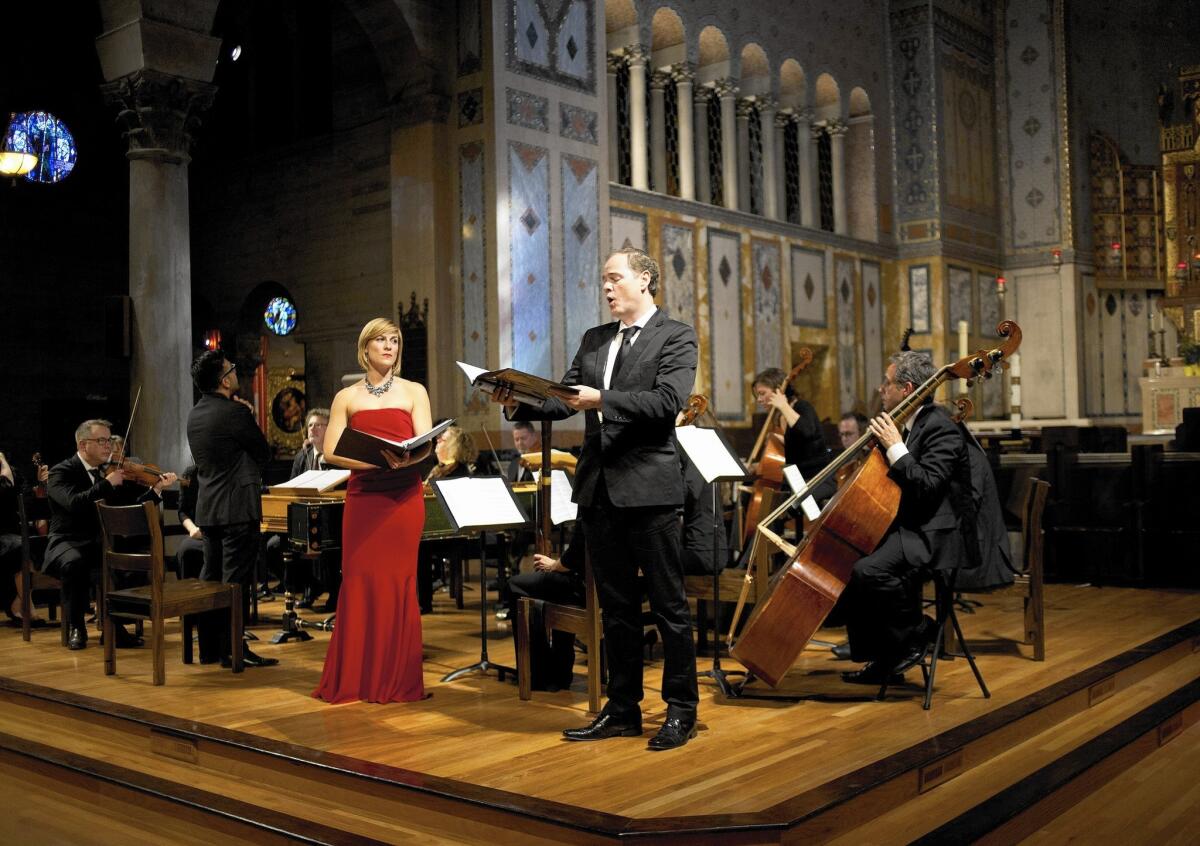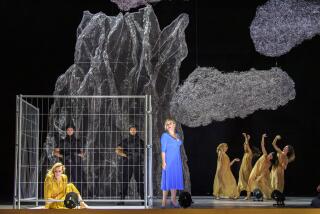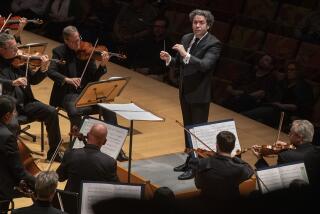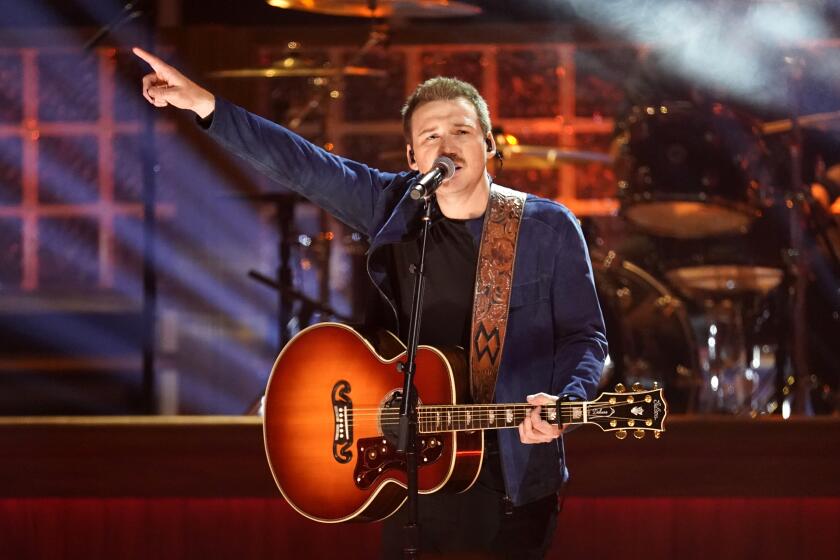Review: Bach Collegium San Diego gives Handel’s ‘La Resurrezione’ life

Handel wrote two Easter oratorios. One is the “Messiah,” taken over by Christmas, the extravagant “Hallelujah” chorus so well suited to the season. The other is in every conceivable way not the “Messiah” and all but ignored until recently because Handel was a very naughty boy. No, not Monty Python’s “Messiah” parody, but something that comes curiously close in places.
“La Resurrezione” is a product of Handel’s apprenticeship in Rome, where it had its premiere on Easter Sunday in 1708 and immediately offended Pope Clement XI. Defying a papal ban against women onstage, Handel dared permit a lady to sing the ravishing part of Mary Magdalene. The composer soon moved to London, and this early score was soon forgotten.
But “La Resurrezione” had a surprising modern resurrection on the West Coast. The first complete North American performance was in 1987 at St. James Episcopal Church on Wilshire Boulevard in Los Angeles. A performance three years later by Nicholas McGegan and his Philharmonia Baroque was the sensation of the Berkeley Early Music Festival. Several top-notch recordings (including McGegan’s) were released in the 1990s, and the work found its niche in the repertory.
That niche, however, has remained minor. An excellent performance Saturday afternoon of “La Resurrezione” by the Bach Collegium San Diego at St. John’s Episcopal Cathedral on West Adams Boulevard was only the second in L.A. It was a revelation.
There is another L.A. connection to this operatic oratorio, which relates the events between Good Friday and Easter from the perspective of Mary Magdalene and Mary Cleophas. Not only is “La Resurrezione” the finest example of Handel’s avant-garde youth, it also happens to be a radical, proto-feminist oratorio portending John Adams’ “The Gospel According to the Other Mary” premiered by the Los Angeles Philharmonic three centuries later.
The opening is an outrageous dialogue between Lucifer and an angel. The Devil gloats that he’s the victor now that the Lord’s son has been killed on Earth. The angel will hear none of it. She reveals that Jesus will return from the dead.
Meanwhile, Mary Magdalene and Mary Cleophas mourn Jesus’ death, Magdalene’s sentiments closer to those of lover than worshiper. St. John appears with the rumor that Jesus will soon return, and he comforts Magdalene by likening her plight to that of a sad turtledove that believes its mate has been snatched from the nest only to sing a song of joy when the mate returns the next day.
Opera was another thing the pope banned, and Handel made no attempt to dramatize the Resurrection. But he may have slyly been parodying the pope’s theatrical restrictions. When the Marys reach Jesus’ tomb too late to witness his return, Cleophas suggests in a lighthearted, pretty pastoral number that they go ask the little birds and the grasses if they’ve seen a savior in the vicinity, as though Jesus might be found tiptoeing through the Easter tulips. Even Eric Idle in “Not the Messiah (He’s a Very Naughty Boy)” couldn’t have made that up.
But Handel’s great subversion is to use the techniques of opera to transfer theology into intense human emotion. It is not what happens in “La Resurrezione” that Handel reveals but what is felt, especially what the women, so often discounted in the Bible, feel and observe. Even a “conquered and confused, terrified, outwitted” Lucifer becomes a powerfully poignant figure who is forced back into hell’s black pit.
The Bach Collegium, which employs a number of early music performers of renown, is an infrequent visitor to L.A. This occasion was a presentation by Mount Saint Mary’s University Da Camera Society, and part of the Chamber Music in Historic Sites series. St. John’s is a beautiful church if overly reverberant (and overly reverent) for “La Resurrezione,” but the San Diegans were, if anything, overly respectful.
The performance was formal, conveying little overt sense of rich Handelian theater. Nonetheless, the drama came through.
Ruben Valenzuela conducted with dramatic vigor. Instrumental solos, particularly from concertmaster Robert Mealy, were alive to the moment and the acoustic. Soprano Nell Snaidas (the Angel), soprano Alice Teyssier (Magdalene), countertenor Ryland Angel (Cleophas), tenor Scott Mello (John) and Mischa Bouvier (Lucifer) were score-bound, yet each became a fully realized, affecting character.
“La Resurrezione” is no longer without advocates. But Saturday’s performance demonstrated that Handel’s other Marys still need attention. The French conductor and harpsichordist Emmanuelle Haïm led “La Resurrezione” this season with the Berlin Philharmonic. Her recent appearance with the L.A. Phil, however, was for excerpts from Handel’s best-known opera, “Giulio Cesare,” rather than for the predecessor of Adams’ “Other Mary.”
More to Read
The biggest entertainment stories
Get our big stories about Hollywood, film, television, music, arts, culture and more right in your inbox as soon as they publish.
You may occasionally receive promotional content from the Los Angeles Times.







